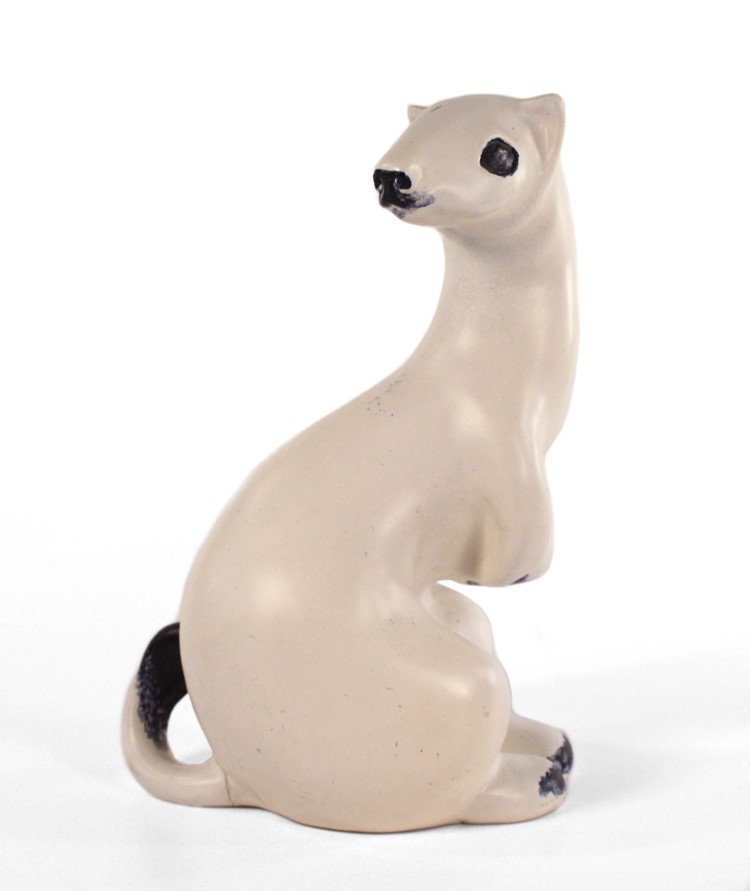Ruth Hunie Randall (1896-1983) was born in Dayton, Ohio and grew up just outside of Cleveland. She graduated from the Cleveland Institute of Art in 1919 with a degree in design and completed a certificate in Art Education in 1921. Randall moved to Syracuse in the early 1920s and began taking classes at Syracuse University’s School of Art, where she studied ceramics in depth for the first time. She also took courses at Alfred University and, in 1932, Randall traveled to study ceramics in Vienna, Austria, at the urging of her friend Thelma Frazier Winter. The Austrian ceramists’ use of clay to create whimsical and carefree sculptures deeply influenced Randall’s work, and she followed their example for the rest of her career. Today, Randall is best remembered for her playful animal sculptures. She drew inspiration for her work from visits to zoos and her many travels around the world, which included trips to Peru, Hawaii, Tahiti, Samoa, Japan, England, Sweden, and Denmark. Randall also sculpted portrait heads (a few of which are in the Everson’s collection) and threw vessels on the pottery wheel. In 1962, Randall wrote that the “ceramic form should remain essentially ceramic; it should never look like plaster, stone, wood, metal, or any other material.” Throughout her more than five decades of working in ceramics, Randall followed this belief, creating sculptures that embraced the material qualities of clay. Randall participated in nearly every Ceramic National exhibition for thirty years, beginning with the first in 1932. She submitted Winter Weasel to the 7th Ceramic National exhibition in 1938, along with two other sculptures, Guinea Fowl and Bison. After the exhibition closed in Syracuse, the show traveled to several venues throughout the United States, including the Museum of Fine Arts, Houston. The installation photograph below shows Winter Weasel in Houston, sitting atop the pedestal on the far left. Winter Weasel was also shown at the Golden Gate International Exposition in San Francisco in 1939.

Installation photograph of 7th Ceramic National, Museum of Fine Arts, Houston, January 1941
Winter Weasel is currently on view in Key Figures: Representational Ceramics 1932-1972 through June 23, 2019.
-Alexis Dygert, Curatorial Intern & Steffi Chappell, Assistant Curator


